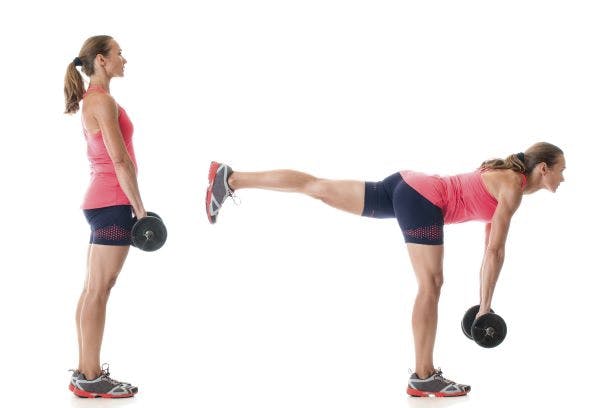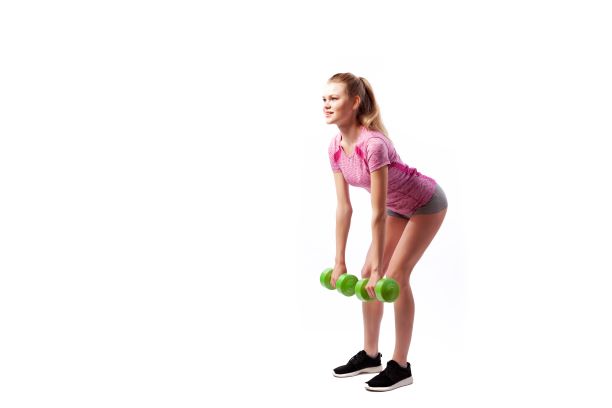The hip hinge is an important movement pattern for everyday life and athletics. The movement is similar to “bowing” or bending at the hips while maintaining a flat spine. The movement occurs at your hips and loads your gluteus maximus and hamstrings. The hip hinge is characteristic of picking up a bag of groceries from the floor or when performing a maximal dead lift with a barbell. Mastering this movement pattern takes advantage of your large backside muscles while minimizing compressive loads through your low back. Everyone can and should learn to hinge properly.
Muscle Activity during the Hip Hinge
The hip hinge movement is controlled by eccentric actions of your hamstrings and glutes. These muscles are actively lengthening to control the “bowing” movement of the hip hinge. Research suggests there is slightly greater activation of the medial, or inner, hamstring muscles during the hinge in comparison to the lateral hamstrings. Also, in comparison to the squat, the hip hinge requires greater hamstring than quadriceps activation.

The hinge also requires activation of your core muscles to maintain a neutral spine. The rectus abdominis and oblique abdominal muscles are activated at relatively low levels compared to your low back muscles. The erector spinae is the primary muscle required to maintain a neutral lumbar spine during the hip hinge. The demands placed on your hamstrings, gluteus maximus, and erector spinae makes the hinge a great movement pattern to train your posterior chain. Your posterior chain is important for athletic success and to counteract the postural changes that occur as a result of aging.
There are many different exercise variations that incorporate the hinge. These variations can involve one or both legs. They can take the form of a traditional deadlift or a Romanian deadlift (RDL) with less knee bending. We recommend mastering the movement pattern before adding loads for strengthening.
Adding Load to the Hip Hinge
Once you master the hip hinge pattern, add a kettlebell or dumbbell to build strength. Begin by placing a light kettlebell or dumbbell on the floor. Stand over top or slightly in front of the load. Place your feet slightly wider than hip-width with your knees slightly bent. Keep your chest up, shoulders back, and abdominals tight. Without bending your knees any further, push your hips back and lower your chest toward the floor. Reach for the kettlebell, keeping your back straight and bending your knees only slightly.
The movement occurs at your hips, not knees. Once you grab the kettlebell, pick it up and reverse directions by pushing your hips forward and squeezing your glutes. Return the kettlebbell to the floor by hinging at the hips. Perform 6 to 10 repetitions for 2 to 4 sets.
Final Thoughts on the Hinge Pattern
The hip hinge can be a challenging movement pattern to master. Many people are prone to flexing or rounding their low back instead of moving through their hips. This commonly occurs in everyday life when bending to the floor to pick up light or heavy objects. A low back-driven pattern will increase demands on your lumbar spine instead of your much larger and stronger lower body muscles. This article highlights some of the basics to performing the hinge. In future articles, we will outline exercises to refine this important movement pattern. As always, contact us if you would like help getting started or have questions about how the hip hinge can help you.

